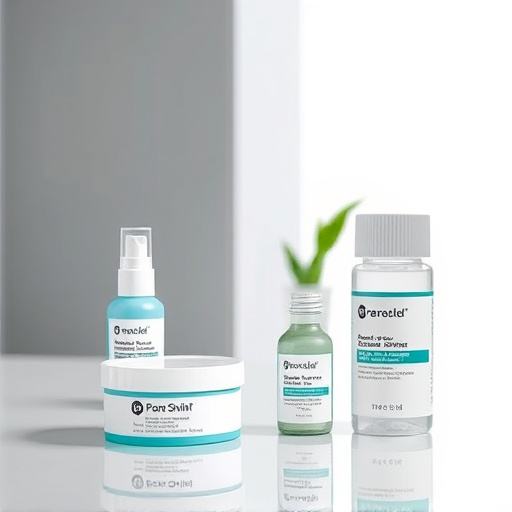Choosing between dry filter and oiled filter intakes depends on specific application needs. Dry filters, lightweight and efficient for initial dust collection, are ideal for indoor environments like offices, hospitals, and food processing plants where high particulate reduction rates against common allergens like dust, pollen, and pet dander are crucial. Oiled filters, with lubricated surfaces enhancing trapping capacity, prioritize consistent airflow and are suitable for automotive and industrial settings with higher particulate loads and demands for efficient airflow. Performance metrics to consider include particulate matter reduction, flow rate, and pressure drop.
In the realm of engine performance, understanding the distinction between dry and oiled filter intakes is paramount. This article delves into the heart of this debate, offering a comprehensive comparison of filtration effectiveness. We explore how each system operates, dissecting their unique advantages and drawbacks through key performance metrics. Whether you’re an automotive enthusiast or a professional mechanic, grasping the dynamics of dry versus oiled filters can significantly impact your choices in maintaining optimal engine health.
- Dry Filter vs Oiled Filter Intakes: Understanding the Basics
- Performance Metrics: A Side-by-Side Comparison of Filtration Effectiveness
- Practical Applications and Considerations for Choosing Between Dry and Oiled Filters
Dry Filter vs Oiled Filter Intakes: Understanding the Basics

In the realm of filtration systems, understanding the distinction between dry and oiled filter intakes is paramount for optimal performance. Dry filters, as the name suggests, operate without any oil or lubricating fluid, relying solely on a porous material to trap particles. This design makes them lightweight and efficient for initial stages of dust or debris collection. However, they can become less effective over time as the accumulated grime can alter the filter’s efficiency, leading to increased pressure drop and reduced airflow.
In contrast, oiled filter intakes introduce a thin layer of oil to the filtering process. This strategic addition enhances the trapping capacity by allowing smaller particles to stick to the oily surface, preventing them from escaping. While they might be heavier and require more maintenance due to periodic oil changes, oiled filters offer superior performance in environments with high particulate loads. In terms of dry vs oiled filter intakes, the choice ultimately hinges on the specific needs of the application, considering factors like airborne particle size, load, and desired filtration efficiency.
Performance Metrics: A Side-by-Side Comparison of Filtration Effectiveness

When comparing filtration effectiveness, understanding performance metrics is key. Metrics such as particulate matter reduction, flow rate, and pressure drop offer insights into how well a filter performs. In the context of dry filter vs oiled filter intakes, these metrics reveal distinct differences. Dry filters, characterized by their unlubricated design, often showcase higher particulate matter reduction rates due to their rigid structure, making them ideal for environments requiring exceptional dust capture.
In contrast, oiled filters are designed with a lubricated surface that allows for smoother air passage, resulting in higher flow rates. While they may not trap as many fine particles as dry filters, oiled filters excel in maintaining lower pressure drops, ensuring efficient airflow. This trade-off makes oiled filters suitable for applications where consistent airflow is more critical than maximum particulate reduction, such as in automotive and industrial settings.
Practical Applications and Considerations for Choosing Between Dry and Oiled Filters

When it comes to practical applications, both dry and oiled filters have their unique advantages and are chosen based on specific requirements. Dry filters are a popular choice for various industries due to their simplicity and ease of maintenance. They are commonly used in air filtration systems where clean air is required, such as in offices, hospitals, and food processing plants. Dry filters effectively capture particles like dust, pollen, and pet dander, ensuring indoor air quality.
On the other hand, oiled filters are designed for more demanding environments. They are often utilized in automotive and industrial settings where high-performance filtration is essential. Oiled filters excel at trapping smaller pollutants, including fine dust and smoke particles, making them ideal for outdoor use or areas with high contamination levels. The trade-off is that these filters require more frequent cleaning or replacement due to the accumulation of debris on the oil surface. Choosing between dry and oiled filters depends on factors like application, environment, and desired level of filtration efficiency.
When it comes to choosing between dry and oiled filter intakes, understanding their distinct characteristics is key. While dry filters excel in capturing fine particles and providing consistent performance, oiled filters offer enhanced durability and a more efficient flow rate. The optimal selection depends on individual needs, with each having its strengths. By evaluating performance metrics and considering practical applications, users can make an informed decision for their specific requirements, ensuring optimal filtration effectiveness.














